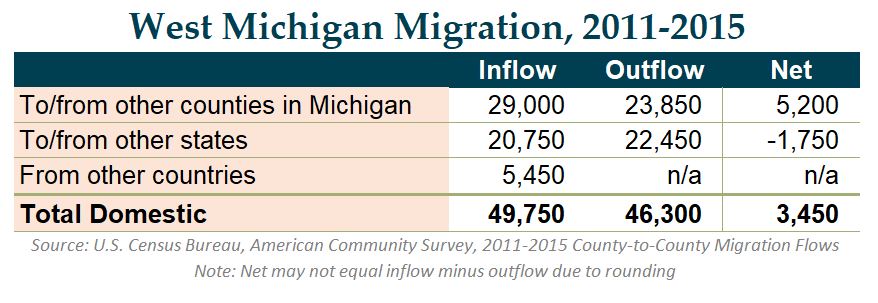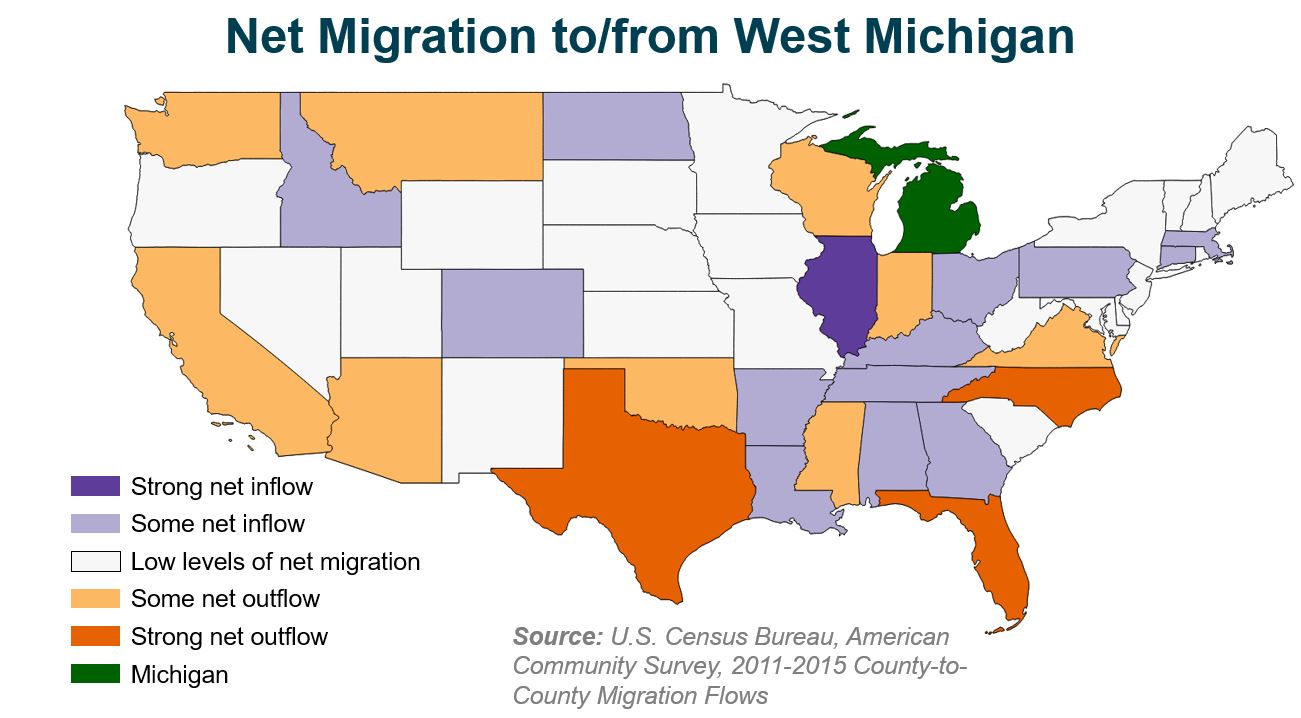Even as recent studies have shown that the next generation of adults is moving across state borders less frequently than the previous generation, it is still important for regional leaders to be aware of what migration patterns look like. Knowing the net migration for an area and where individuals are moving to or coming from is not only important for economic developers, but educators, human resources leaders, and many others.
Using county-to-county migration flow data collected and released by the U.S. Census Bureau (originating from responses collected as part of the American Community Survey), we can see how West Michigan fits into the national picture in terms of migration levels, destinations, and international sources.
Migration to and from West Michigan
Using the newest estimates available, the 5-year average files ranging from 2011-2015, we can see that the 13-county West Michigan region has a net positive flow of individuals into the region, meaning that more individuals migrated into the region and those who left. This is the result of a net inflow from counties in the state of Michigan that are not a part of West Michigan (+5,200 net inflow) more than balancing out a smaller negative net flow of residents to other states in the U.S. (-1,750 net outflow).

Within the state of Michigan, West Michigan gained the most residents on a net basis from Oakland, Wayne, and Macomb Counties (all in the Detroit area on the east side of the state), while losing the most residents on a net basis to Ingham County (Lansing area), Washtenaw County (Ann Arbor area), and Isabella County (primarily around Mount Pleasant).
Despite a negative net flow of residents out of the region when looking at only the 49 other states, West Michigan sees a positive flow of residents into the region from 28 states, led by Illinois and Alabama. Conversely, West Michigan loses a net 1,550 individuals to Florida, the result of 1,600 Floridians moving to West Michigan but 3,170 former residents moving to Florida.

International migration
While we cannot use this data set to see outflow migration to international destinations, we can summarize inflow international migration. Using the most recently available data again, we can see that West Michigan had an inflow of a little under 5,500 new residents who arrived from outside the U.S. Of these, about 43 percent were previously living in Asia, about 16 percent from Central America, and a little under 16 percent from Europe.
Future Data Topics
Have you been enjoying these “Data Points” blogs and are interested in other data? Let us know what topics you’d like to know more about on our Twitter @WMTalent2025! We’d like to crunch some numbers that you’re interested in!
Technical Note
These data are derived as a 5-year average of five 1-year samples, with the data points originating as “The American Community Survey (ACS) and the Puerto Rico Community Survey (PRCS) ask respondents age 1 year and over whether they lived in the same residence 1 year ago. For people who lived in a different residence, the location of their previous residence is collected.” Therefore, the resulting data should not be taken as an aggregate for the five year period, but rather as an annual average. See the most up-to-date documentation from the U.S. Census Bureau here.


